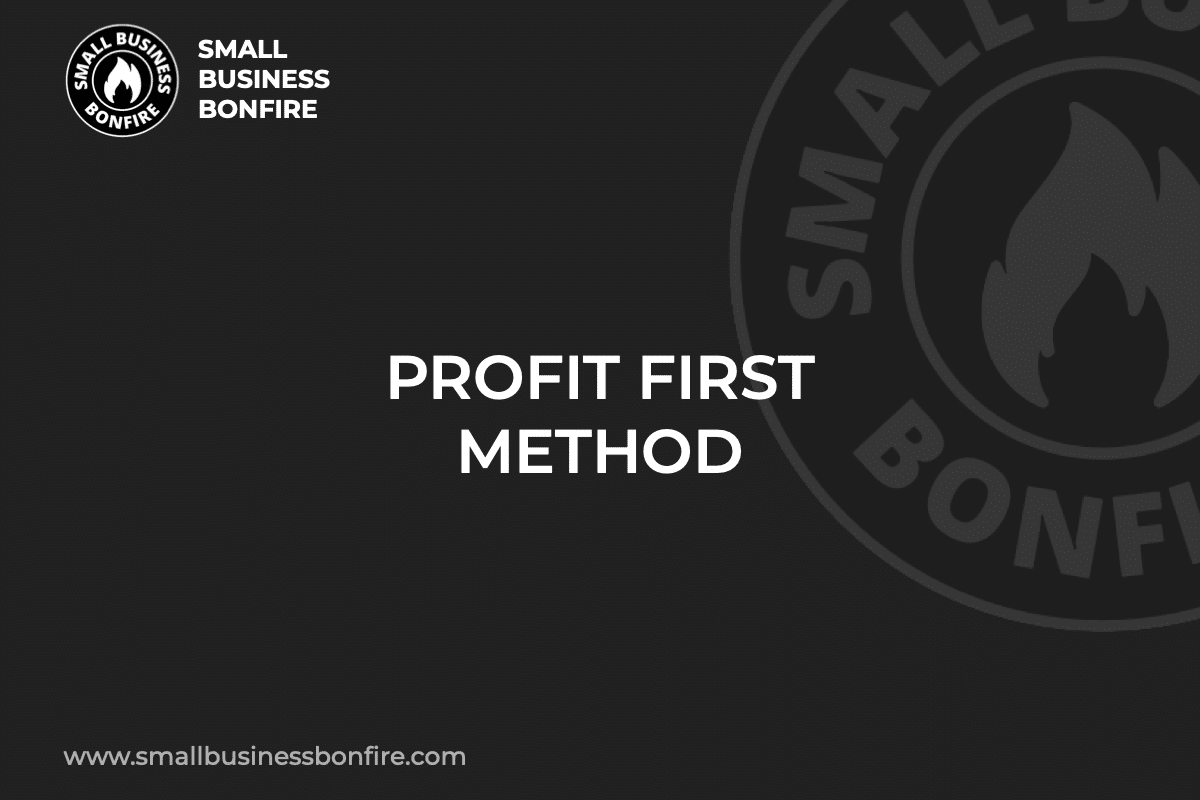Are you struggling to turn a profit in your business?
With the Profit First system, I dramatically changed how I viewed my finances and thought about profit!
My name is AJ, and I recently exited my business for multiple seven figures. A HUGE part of that was the profit-first system.
Stick around to the end, and I’ll share a few tips and tweaks I made that helped out a ton.
Let’s nerd out and dive in!
Key Takeaways
- This system reduced my financial stress by 50%
- This system helped me immediately cut costs by 15%
- This system helped me pay myself a profit distribution for almost a decade
What is the Profit First Method?
The Profit First system is an approach to managing business finances, fundamentally shifting the traditional formula of:
- Sales – Expenses = Profit to
- Sales – Profit = Expenses.
Instead of treating profit as an afterthought, businesses using the Profit First system prioritize it from the get-go, setting aside a designated percentage of income as profit first.
From the outset, you’re setting aside funds for your profit, taxes, and personal compensation.
The remaining amount forms the budget your enterprise has for expenditures like rent, wages, materials, and utilities.
This approach might initially seem unsettling, but prioritizing profits enhances your awareness of your spending habits. \
More crucially, it awakens your consciousness to the importance of investing in your own tranquillity and life quality.
This paradigm shift can be transformative, especially for those unaccustomed to rewarding themselves.
I know what you’re thinking: “How can you set aside profit you don’t have?
We’ll get to that.
Profit First Method Benefits
The Profit First Method helped me:
- Reduce financial stress by prioritizing profitability over revenue
- Streamline my business expenses, leading to more efficient operations
- Establish a sustainable salary for myself, ensuring that I’m rewarded for my hard work
- Set aside sufficient funds for taxes, preventing unexpected financial burdens
- Create a financial safety net that helps my business weather economic uncertainties
Profit First, Step by Step
Here’s how I would impliment the Profit First system if I were starting over!
Step 1: Evaluate your financial health (CAP)
Go back into your accounting software and bucket your expenses into these categories.
- Revenue
- Owners Pay
- Taxes
- Operating Expenses
- Employee Salaries (My Tweak)
This initial assessment serves as a benchmark for your Profit First journey.
From here on out, we’ll call these CAPS (current allocated percentages). E.G., this is your baseline.
It might look something like this:
- Revenue: 100%
- Owners Pay: 10%
- Taxes: ???
- Operating Expenses: 50%
- Employee Salaries or Contractors: 40%
Step 2: Set your Profit First percentage goals (TAP)
TAP details where we want your revenue to go once the business runs at efficiency and profitability; these are the ideal percentages you’re working towards hitting.
Here’s a good starter goal for each category.

A quick note on taxes. These are ALWAYS super hard to judge. I always exceeded the above percentage by 5% (to 20%) because I never wanted Uncle Sam knocking on our door.
Step 3: Go to the bank!
It may seem like overkill, but in this step, you set up multiple bank accounts — one for each category: Revenue, Owners Pay, Taxes, Operating Expenses, Employee Salaries, and Profit.
- Revenue (Checking Account)
- Owners Pay (Savings Account)
- Taxes (Savings Account)
- Operating Expenses (Savings Account)
- Employee Salaries (Savings Account)
- Profit (Savings Account)
Step 4: Transfer the cash!
Every time you receive income, it should be deposited directly into your revenue account and divided among the other accounts based on your predetermined TAPs.
Pro Tip: You don’t have to do this every day; do it once a week or so (unless you need the cash).
When we had enough cash reserves, I would do it twice a month before we ran payroll.
Example of $1,000 coming into your revenue account:
- Revenue (100%): $1,000
- Owners Pay (35%): $350
- PayTaxes (20%): $200
- Operating Expenses (20%): $200
- Employee Salaries (20%): $200
- Profit (5%): $50
Step 5: Reduce expenses
If your operating expenses exceed the money you’ve allocated for that purpose, you’ll need to cut costs.
The original profit-first system doesn’t call to split up employee salary and OPEX (operating expenses).
I always liked doing that to understand better where I could cut costs or when I needed to cut headcount.
Trust me, I would say that 90% of you reading this can cut costs somewhere. Most small business owners don’t need a lease, new equipment, or expensive software. Most of those are nice to have, not a gotta have.
Step 6: Review and adjust
Every quarter, you should review your current allocations and adjust your TAP (even if it’s just by a few percentage points).
The goal would be to run your business SO efficiently that every quarter you’re increasing the amount you’re paying yourself.
Remember, Profit First is a flexible system that should adapt to your changing business needs.
Pro Tip: When in doubt, add an account. Over time, we added accounts for Marketing Expenses and set a TAP of 5% of gross revenue. Make the system your own!
Step 7: Celebrate Profit Distributions
You should have some cash in your profit account at the end of each quarter.
Take 50% of it as a distribution. You earned it!
The profit account should serve two purposes.
- Motivation and a reminder of why you started your business in the first place.
- An emergency fund in case shi* hits the fan.
Step 8 BONUS: Let your cash work for you.
This is an advanced step, but why leave your money in a savings account when you could collect some cash?
I ONLY recommend doing this once you’ve mastered the system, but at a point, you should be socking cash in a high-yield savings account OR if you’re super advanced, a T-Bill ETF.
Note: I am not a financial planner; the above isn’t financial advice. Just what I do.
Profit First Method Conclusion
Remember, the goal is not to starve your business but to make it more efficient and sustainable.
Profit First instills financial discipline and promotes a healthier relationship with your business finances.
It’s a long road to go from financial uncertainty to financial stability, but if you can master the Profit First System and make it your own, you’ll be well on your way.
Let me know if I missed anything in the comments below!
Newsletter Signup
Join The Leads Field Guide Newsletter for tips, strategies and (free) resources for growing your leads, and closing more deals.

